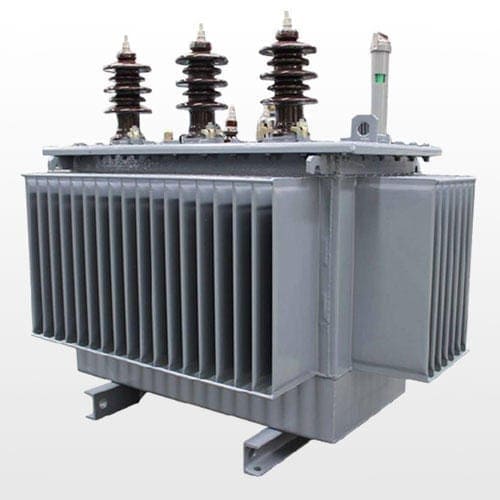Transformers are important electrical components that require proper care and maintenance. With proper maintenance, you can be sure of performance, durability, and efficiency. Plus, you could’ve done away with unnecessary repair costs. So, how do you maintain your power transformer?
Well, it starts with understanding the common power transformer devices. Understanding this device will help you recognize all things oil transformer protection.
On these lines, here are common power transformer devices. Plus, you will learn how using the TranSwitcher can help you maintain your transformer for improved efficiency and durability.
The Basics
Power transformer protection entails two types of devices. They include:
Measuring devices—these are devices that can be used to measure electrical quantities that affect the transformer
Status devices—these are devices that indicate the actual status of the transformer—especially when it comes to the physical quantities of the unit.
The Protraction Devices
The following are common protection devices for your transformer:
- Buchholz (Gas) Relay and Pressure Relay
- Winding Thermometer and Oil Level Monitor Device
Buchholz (Gas) Relay
As a powerful mechanical based fault detector, the Buchholz protection is used in oil-immersed transformers to offer protection.
This Buchholz (gas) relay, which is normally placed in between the oil conserver and the transformer’s main tank, plays a key role in ensuring that the transformer is adequately protected.
However, to achieve reliable operation, you must incline the conservator pipe. It’s also important to note that there is a bypass pipe that allows the Buchholz relay to be taken out of service.
As a fast as well as sensitive fallout based detector, the Buchholz (gas) relay doesn’t depend on the transformer windings. It operates independently.
It also works independently of tap changer position as well as instrument transformers. For instance, when the tap changer position is on tank type, it should have its own Buchholz (gas) tap changer.
Normally, a Buchholz protection should have a pivoted float and a pivoted vane. While the float is tasked with carrying one mercury switch, the vane is dedicated to transporting a different mercury switch. Usually, oil is used to fill the casing while the mercury switches are left open.
Dealing with Minor Faults
When a minor fault arises in the transformer, it’s assumed that gases will arise from the location of the fault within the transformer itself. Here, the gas will bubble up—passing through the conservator’s main pupping.
What happens is that the Buchholz protection casing will tap the gab bubbles. What this means is that the oil in the casing will be replaced by the gas in the Buchholz protection casing.
If the oil levels fall further, it will trigger the float (F)—causing the tilting of the mercury switch. Consequently, the alarm circuit will be closed.
Dealing with Major Faults
A major fault might also occur within the transformer. This can occur to the earth’s windings. Major faults usually produce large amounts of gas—typically more than 50 cm3/ (kWs). Also, oil vapor can also be produced. It’s important to note that the oil vapor cannot escape.
This results in the production of a steep pressure buildup—which results in the displacement of the oil. Consequently, there is a rapid flow from the unit to the conservator.
As a result, a trip circuit is closed by a mercury switch. Fault location and fault current magnitude will hugely influence the trip contact’s operating time.
According to various simulated tests, the operation time ranges from 0.050 to 0.10 seconds. Thus ensure that the operating time doesn’t go beyond 0.3 seconds.
Pressure Relay
Most power transformers featuring on-tank-type based tap changers come with pressure protection that handles the separate tap-based changer oil compartment. With this feature, it’s possible to detect a sudden pressure increase in the changer oil enclosure.
If the piston pressure exceeds the spring counterforce, the piston moves the switching contacts. It’s important to note that the switching unit’s microswitch has been sealed hermetically.
It is also pressurized with a high level of nitrogen gas. If an internal fault occurs in the transformer, an overpressure will be detected in the transformer tank.
A frangible disk—one of the pressure relief devices on the market—is used. Thus relieving as well as pressure limiting prevents explosive raptures and fires of the transformer tank.
Why Transformer Protection
A transformer is an important device. It’s a costly investment. That’s why you need to understand basic transformer protection devices.
Understanding the basics of transformer protection principles will enable you to protect your transformer from overloads. It will also protect your transformer from winding failures resulting from short-circuiting.
It will also protect your transformer from core faults. This includes core insulation failures and short laminations. Also, problems like on-load tap charger based failures can be avoided with proper transformer protection.
Protection helps keep fires at bay. Even more, they enhance the performance and reduce the power wattage of your transformer
Oil Level Monitor Based Device
Transformers featuring oil conservators—also known as expansion tanks—are often fitted with oil level monitors. These monitors are equipped with two monitors. The first contact is reserved for max oil level based alarm.
The second one is dedicated to the min oil level alarm. A top-oil thermometer is equipped with a bulb in the transformer’s top. Normally, any transformer can have from 1-4 contacts. These contacts tend to close sequentially as temperature increases.
These contacts also help to start the fans that force the cooling process to start. The third contact is used to trigger an alarm. On the other hand, the fourth contact is effective in setting up trip load breakers. This contact also helps re-energize the transformer.
The Bottom-Line
Transformer protection is important for various reasons. First, it boosts the efficiency of the transformer. This cuts energy costs. Second, it enhances the durability of the transformer. Lastly, it boosts your transformer’s performance.
It’s also important to note that understanding different transformer devices will help you protect it better. The above information will help you understand all things transformer protection.







